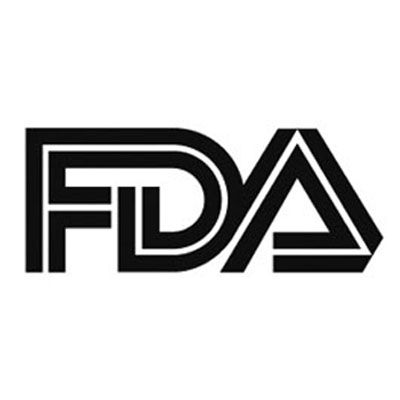FDA Accepts sNDA for Selinexor as Treatment of Patients With Multiple Myeloma
The FDA has accepted the supplemental New Drug Application seeking approval of selinexor as treatment of patients with multiple myeloma following at least 1 prior line of therapy.

The FDA has accepted the supplemental New Drug Application (sNDA) seeking approval of selinexor (Xpovio) as treatment of patients with multiple myeloma following at least 1 prior line of therapy, Karyopharm Therapeutics Inc., developer of the drug, announced in a press release.1
The FDA is expected to make a decision on this sNDA by the end of the first quarter in 2021.
The application is supported by findings from the phase 3 BOSTON clinical trial (NCT03110562), which evaluated selinexor in combination with bortezomib (Velcade) plus dexamethasone (SVd) compared with bortezomib plus dexamethasone alone (Vd).
“This sNDA acceptance brings us one step closer to providing access to selinexor for a significantly larger patient population battling multiple myeloma,” said Sharon Shacham, PhD, MBA, founder, president and chief scientific officer, Karyopharm, in a statement. “If approved, we believe selinexor will become an important new, oral, once-weekly treatment option, used in combination with once-weekly Velcade, for patients with multiple myeloma after at least 1 prior line of therapy.”
The BOSTON trial demonstrated improved responses and outcomes with SVd versus Vd, meeting its primary end point of progression-free survival (PFS).2 The study findings presented at the 2020 American Society of Clinical Oncology Virtual Scientific Program.3
The median PFS was 13.93 months with the combination compared with 9.46 with Vd alone (HR, 0.70, P =.0066). The selinexor regimen also led to an overall response rate of 76.4% versus 62.3% in the control arm (P =.0012). The median overall survival has not been reached for the selinexor arm but was 25 months in the Vd arm (P =.28).
The investigators also observed a significant reduction in the rate of grade ≥2 peripheral neuropathy with SVd of 21.0% compared with the control arm of 34.3% (P =.0013), which resulted in fewer deaths, and this different was clinically significant. The most common treatment-related adverse events (TRAEs) that were grade 3 or higher in severity in the SVd arm versus the Vd arm were thrombocytopenia (35.9% vs. 15.2%), fatigue (11.3% vs. 0.5%) and nausea (7.7% vs. 0%), respectively.
The global randomized study evaluated a 100 mg dose of selinexor in combination with 1.3 mg/m2 of bortezomib and 20 mg of dexamethasone in patients. The secondary end points of the study included objective response rate, overall survival, and peripheral neuropathy.
To be included in the trial, patients had to have a histologically confirmed diagnosis of multiple myeloma with at least 1 prior anti-cancer therapy. They also had to have documented evidence of progressive disease, prior treatment with bortezomib or another proteasome inhibitor, an ECOG performance status of 0 to 2, and adequate hepatic, renal, and hematopoietic function to enroll in the study.
Selinexor is a first-in-class oral Selective Inhibitor of Nuclear Export (SINE) compound. The agent selectively binds to and inhibits the nuclear export protein exportin 1 (XPO1) and blocks the nuclear export of tumor suppressor, growth regulatory and anti-inflammatory proteins, which leads to accumulation of the proteins in the nucleus, overall enhancing their anti-cancer activity.1
Selinexor has previously been approved by the FDA for the treatment of patients with penta-refractory multiple myeloma, as well as for the treatment of patients with relapsed/refractory diffuse large B-cell lymphoma.
“We look forward to working closely with the FDA during their review process and we sincerely thank the many patients, caregivers, and physicians whose immense contributions have helped us achieve this latest milestone,” stated Shacham.
Reference
1. U.S. Food and drug administration accepts karyopharm’s supplemental new drug application for xpovio (selinexor) as a treatment for patients with multiple myeloma after at least one prior line of therapy. News Release. July 20, 2020. Accessed July 20, 2020. https://bit.ly/3eEP7hu
2. Karyopharm announces phase 3 BOSTON study meets primary endpoint with significant increase in progression-free survival in patients with multiple myeloma following one to three prior lines of therapy. News release. March 2, 2020. Accessed July 20, 2020. https://bit.ly/32A5pWn
3. Dimopoulos MA, Delimpasi S, Simonova M, et al. Weekly selinexor, bortezomib, and dexamethasone (SVd) versus twice weekly bortezomib and dexamethasone (Vd) in patients with multiple myeloma (MM) after one to three prior therapies: Initial results of the phase III BOSTON study. J Clin Oncol. 2020. 38: (suppl; abstr 8501). doi: 10.1200/JCO.2020.38.15_suppl.8501.
Gasparetto Explains Rationale for Quadruplet Front Line in Transplant-Ineligible Myeloma
February 22nd 2025In a Community Case Forum in partnership with the North Carolina Oncology Association, Cristina Gasparetto, MD, discussed the CEPHEUS, IMROZ, and BENEFIT trials of treatment for transplant-ineligible newly diagnosed multiple myeloma.
Read More